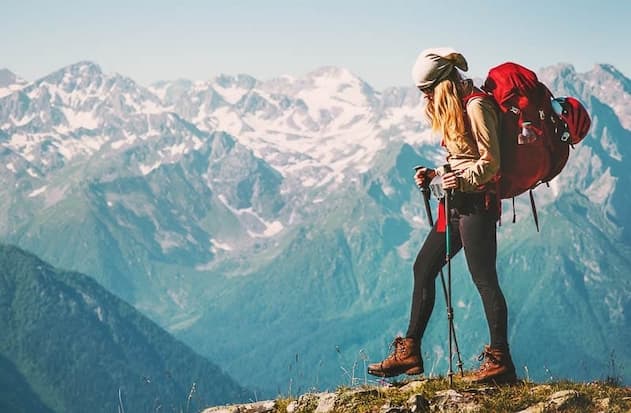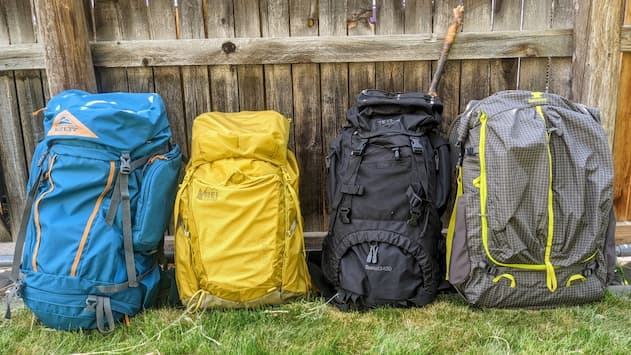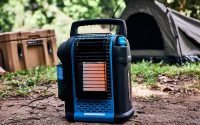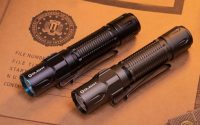How to Choose the Ideal Hiking Backpack for Your Next Adventure

Hiking is not just an activity – it’s a way of life. Besides being good for your physical health, your mood and mind will also benefit. But for everything to go smoothly, you must be equipped with the right backpack to hold all your hiking essentials safely.
Choose the Right Size
The first thing you need to decide on is the backpack size. Depending on how long you’ll be hiking, you’ll need to take a certain amount of gear, and it will all be a different size. You don’t want to drag a heavy backpack with you on a 6-hour-long mountain hike. If you’re going on a weekend hike for up to 3 days, you can get a 30-50l pack. You’ll have enough space to fit everything you need during those three days. You need to be efficient and practical to get everything you need and still be lightweight. If you succeed, your legs will be grateful. Some of the things you can take with you are:
- Food bag with at least six meals;
- Sleeping bag;
- Lightweight tarp, a bivy, a one-person tent or a hammock;
- Sleeping mat;
- Extra pair of underwear and socks;
- Rain shell;
- 2l of water reservoir;
- Headlamp.
If you go for a 3-5 night trip, 50-80l one will suffice. Hiking for two more days will require more supplies and gear. Besides the essentials, you can also get:
- More clothes;
- Pillow;
- 2-3 person tent;
- Cooking pot;
- Camp stove.
You can buy a big and comfortable outdoor backpack of +70l when you’re going on a trip of 5 or more days. You can take with you:
- 4+ person tent;
- Highly insulated sleeping mat;
- Food for 10+ days;
- First aid kit.
This is a great winter backpack for even just a day because wither clothing takes up a lot of space. Plus, you can carry your children’s stuff and extra layers of clothing. But remember that the heavier it is, the slower you’ll be. So, weigh your options carefully.

Consider the Best Materials
The material can have a significant influence on your choice of backpack. Is it waterproof? Is it durable? Is it breathable? You have several options to consider.
Nylon
Nylon is the most popular material when it comes to backpacks. Manufacturers make it by melting down plastics and forming them into fibres. Then, these fibres are woven into a backpack. The things that make nylon so popular are its durability, strength, abrasion, and temperature resistance. It can also keep some insects out, and mould won’t be a backpack problem for you anymore. One thing you can take as a downside is its UV intolerance.
Polyester
Polyester is a different plastic-based fabric that is equally popular, particularly since the 1970s when manufacturers used it a lot for making clothing. Polyester is robust and won’t wear and tear easily. It also dries quickly and doesn’t react to most chemicals. Additionally, it is sturdy and lightweight and does not wrinkle easily. That is a lot of wonderful characteristics that will make any backpack as practical as it gets.
Polypropylene
Even though it’s not that common among backpacks, polypropylene is a great material for this purpose. Manufacturers melt it easily and reshape and redesign it into a bag, despite its high melting point. It’s water and chemical-resistant and has impressive strength. It’ll take a lot of effort to wear and tear it during your hiking adventures.
Canvas
Canvas is an old-school material that’s mostly used to make duffel bags. It’s the material that our grandparents’ and parents’ backpacks were made of. After a while, canvas came back as an outdoor backpack material. Because it’s originally made from cotton, canvas can be heavy and suitable for a smaller backpack. But scientists developed similar fibres that are lighter than cotton and started producing a lighter version of the canvas. This is a strong material that’ll last for a long time.

Important Backpack Features
Frame
Even though most backpack frames are made with an internal frame, there are two more you should consider. The frameless type is very lightweight. People who like to hike fast often choose this one. But it can get a bit uncomfortable if you carry a heavy load on your back. External frame types are most commonly made from aluminium and are meant for heavy and abnormally shaped loads you must carry. They have good ventilation but are not very comfortable. As we said, the internal frame backpacks are the most common type where the frame’s structure is hidden. They disperse the weight all over the body and help the hiker to stabilise.
Ventilation
You can’t escape from a sweaty back when you’re going on a hike. It’s just part of the journey. But people devised a way to lower the sweating by adding ventilation to the backpack. This is most commonly in the form of a mesh that allows for breathability and keeps the bag away from your body. It holds enough airflow in between so you get ventilated and reduce sweating. Some backpacks have chimney-like channels that work the same way.
Padding
If you plan to carry the backpack for a long time, comfort is key, so seek something with sufficient cushioning. A padded hip belt is necessary because most of the burden will rest on your hips. Pay particular attention to any sore spots or painful areas. Another crucial feature is padded shoulder straps. After a long day, a heavy load with thinly padded shoulder straps could cause aching shoulders or back muscles.
Pockets
We all love pockets on everything we wear, pants, dresses, coats, jackets and even backpacks. The hip-belt pockets are meant for the GPS, snacks or your phone. The side pockets are elastic and are great for keeping your water bottle or sandals. The front pockets will serve well for storing your dry jacket or some maps. Some of them even have smaller inner pockets for good organisation. If your backpack has lid pockets, use them to store small items like gloves, lip balm or flashlights.




